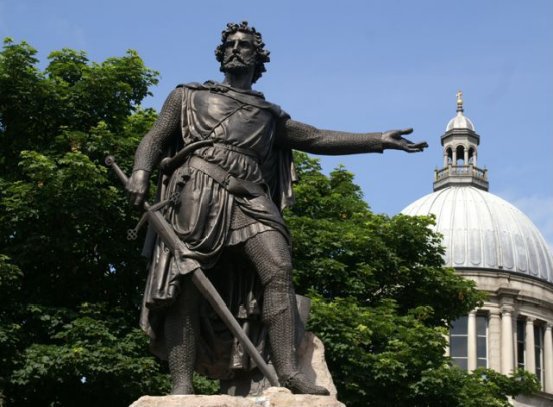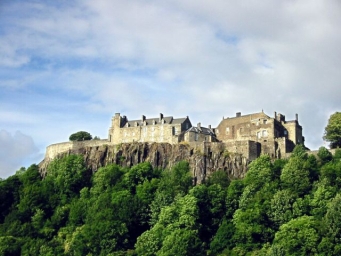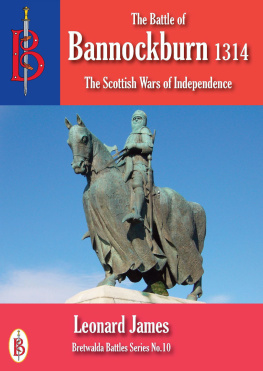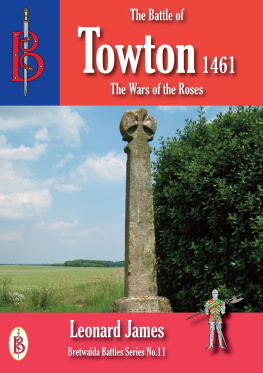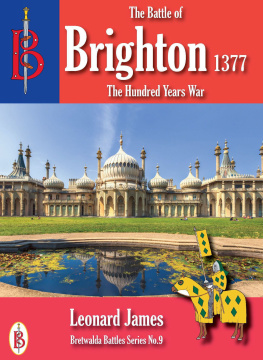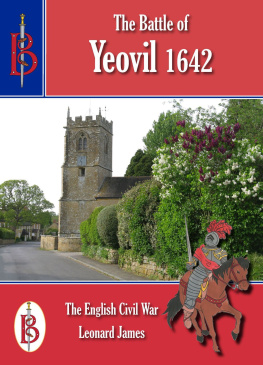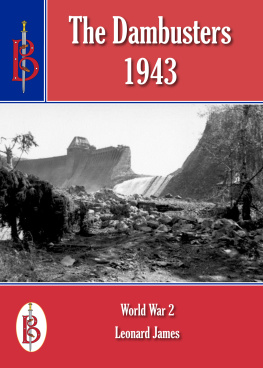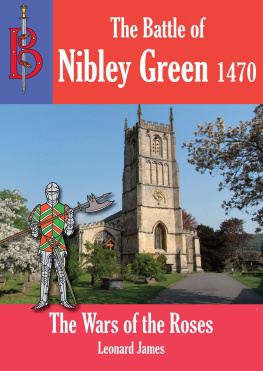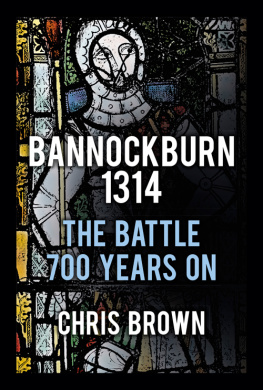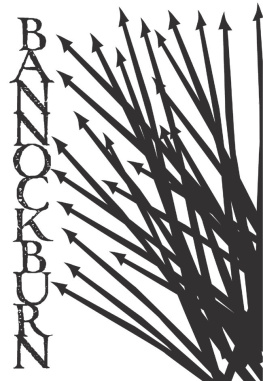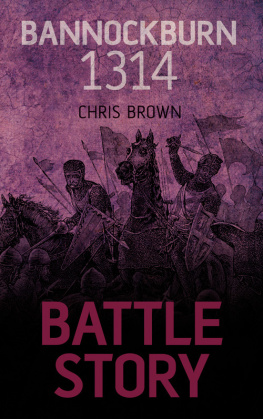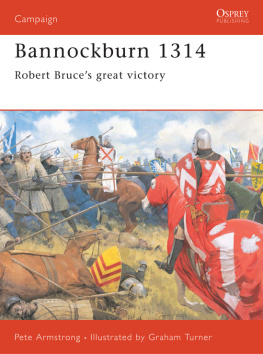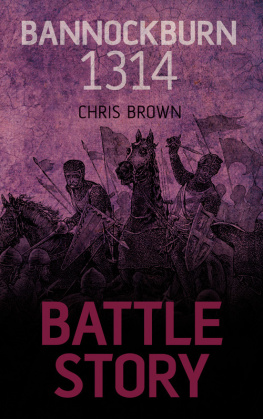Bretwalda Battles
The Scottish Wars of Independence
The Battle of Bannockburn 1314
by Leonard James
Published by Bretwalda Books
Website : Facebook : Twitter : Blog
This ebook is licensed for your personal enjoyment only. This ebook may not be re-sold or given away to other people. If you would like to share this book with another person, please purchase an additional copy for each person. If you're reading this book and did not purchase it, or it was not purchased for your use only, then please purchase your own copy. Thank you for respecting the hard work of this author.
First Published 2014
Copyright Leonard James
Leonard James asserts his moral rights to be regarded as the author of this work.
ISB N 978-1-910440-20-9
Contents
The Scottish Wars of Independence
The war that climaxed with the stunning Scottish victory at Bannockburn in 1314 had it origins in 1290 when Queen Margaret of Scotland died leaving no close relatives to inherit the crown. No fewer than 13 Scottish nobles announced that they were the rightful King of Scotland and for a while it looked as if civil war might break out. To avoid this catastrophe the Scottish nobles made a decision that would plunge Scotland into an even worse series of wars: they asked King Edward I of England to study the competing claims and decide who should be the next King of Scotland.
Edward I was not the sort of man to allow an opportunity to pass him by. He chose John Balliol to be king, but only after extracting from Balliol a promise that he would recognise Edward as his overlord. Balliol agreed readily enough, such agreements being not uncommon in medieval Europe. He expected his duties to England to be relatively light, but Edward chose to treat King John of Scotland as if he were a subject who had no more power or rights than an English farmer. Edward issued orders, sent instructions and appointed officials, ignoring King Johns views or wishes.
In July 1295 the Scots agreed a treaty with France without consulting Edward, who promptly invaded. John Balliol was captured and imprisoned in the Tower of London. Edward declared that he was now ruling Scotland himself and set about installing his own men in positions of power. The Englishmen did not behave well and several atrocities were committed.
Unsurprisingly an uprising against English rule quickly broke out. Led by a relatively obscure knight named William Wallace the rising achieved success at the Battle of Stirling Bridge in 1297, but Edward struck back at the Battle of Falkirk the following year. Thereafter the fighting raged back and forth with neither side managing to secure a final victory. Wallace was captured in 1305 and Edward had him charged with treason. I could not be a traitor to Edward, for I was never his subject, responded Wallace, but Edward had him executed in the most painful and barbarous manner anyway. If Edward hoped Wallaces death would end the Scottish uprising he was wrong. Scottish leadership merely passed into other hands.
The statue of William wallace at Aberdeen. The statue was erected in 1888 and bears this inscription: I tell you a truth, liberty is the best of all things, my son, never live under any slavish bond.
A turning point came in 1306 when two of the leading claimants to the Scottish throne met at Dumfries. In circumstances that remain unclear Robert Bruce stabbed John Comyn to death. Bruce then openly declared that he was King of Scotland and summoned all true Scots to join him in a war of liberation against the English. The Comyns and their allies denounced Bruce as a murderer and joined the English cause. Other Scottish families were at first equally ambivalent, but over time most came to support Robert Bruce. The death of Edward I of England was a boost to Bruce. Many Scottish knights and nobles who had sworn oaths to Edward now felt that they were free to act as they wished. Moreover, Edwards successor as King of England, his son Edward II, turned out to be interested in neither Scotland nor in warfare.
By the spring of 1314 Bruce had managed to defeat the English in Scotland. Through a carefully planned and brilliantly executed guerrilla campaign he had worn down the English strength to almost nothing. Key fortresses were captured one by one, patrols were ambushed, supplies destroyed until finally only the impregnable fortress of Stirling Castle remained in English hands. The castle was besieged by Edward Bruce, younger brother of Robert. He agreed with the castles commander, Sir Thomas Mowbray, that the castle would surrender on 25 June, unless it had been relieved. Such agreements were common in medieval warfare. They reduced casualties on both sides and satisfied chivalric honour.
Robert Bruce was furious when he heard of the agreement. He had been hoping to starve Stirling into surrender and so secure all of Scotland under his rule. Now that such an obvious challenge had been thrown down he knew that King Edward II of England was bound to march into Scotland with a large army. Edward II reacted exactly as Robert Bruce had feared, announcing that he was marching to relieve Stirling with a mighty army.
Stirling Castle from the south. The Battle of Bannockburn was fought as the English sought to relieve their garrison trapped in Stirling Castle by Edward Bruce, younger brother of King Robert Bruce.
For Edward II, the invasion of Scotland went wrong right from the start. He ordered that his feudal host was to muster at Berwick upon Tweed by 11 June at the very latest. In his haste, however, he had not summoned Parliament to vote the money to pay for the expedition. This not only left him short of cash to pay for supplies and wages, but it also gave those who opposed Edward the excuse they needed not to attend. Several leading noblemen, including four earls, and many others did not turn up, thus depriving Edward of some much-needed military experience.
Nevertheless, it was a large army that Edward gathered together. We do not know exactly how many men Edward had, but he seems to have had about 1,000 heavily armoured cavalry - knights, esquires and mounted men-at-arms. One commission of array, that sent to York, has survived. In it the Mayor of York is instructed to send infantry only as cavalry would be of little use in the forests and marshes near to Stirling where it was expected any battle would be fought. It therefore seems likely that the English army had a disproportionately large number of infantry. Assuming Edward summoned the arrays of the northern shires in the same proportion as York, plus the feudal levies of that area, he may have summoned some 21,000 men.
However, the commissions were not sent out until 27 May, allowing only two weeks for the men to gather and march to Berwick. It is unlikely that they all got there on time. We have no surviving records of the numbers of men who actually joined the army. In addition to the 1,000 or so cavalry, there may have been as many as 17,000 infantry, but there may equally as well have been only around 9,000. That Edward did not have as many men as he expected can be deduced by the fact that he waited until 17 June before setting off, leaving himself barely enough time to march the 98 miles to Stirling, never mind fight a campaign on the way.



